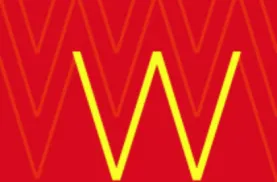India
Tata's backing offers competitive edge for India's BigBasket
Tata's backing offers competitive edge for India's BigBasket
The conglomerate is in the final stages of buying a 60% stake in the retailer for $1.3b.
Tech improvements boost India's online fashion retail market
A growing e-commerce has also been gaining grip in the country.
Apple to open more retail stores in India
The company found that its business in the country doubled in Q1 FY2020.
Amazon halts Pantry delivery service in India
This is expected to help the company in simplifying its grocery proposition.
Reliance Retail partners with Kirana stores for online delivery
It has tied up with nearly 60,000 kiranas, and has plans to enroll more by April.
Spain-based Desigual launches in India's Tata CLiQ Luxury
Collections include new designs that use sustainable materials.
Weekly News Wrap: Silver Lake to invest $1b in Indian retail firm; Restos unveil new store designs inspired from the pandemic
And some retailers still plan to open more stores in 2020.
Organic formulations boost India's skincare market
The facial care category is projected to rise the fastest.
Opportunities flow for RTD cocktails in India
Bars and pubs have been largely kept out of the purview post-lockdown.
Long work hours, higher income boosts India's convenience store demand
New entrants are expected to struggle in competing with local stores.
Verifone, Ezetap partner to accelerate end-to-end digital payment solutions for merchants
To meet the needs of the rapidly evolving and growing payments technology landscape in India, payments and commerce solutions provider Verifone and software and payment processing provider Ezetap recently announced a partnership to enable merchants to adopt in-store and online payment acceptance more quickly and easily.
India's Samsung Mall powered by AI and machine learning
Companies now have the power to process millions of product records in minutes, using artificial intelligence (AI), without any humans in the loop with Indix’s prediction services. The product AI company recently announced the broad availability of its AI-based prediction services for product categorisation, brand identification, standardised attribute extraction and product clustering.
New technologies to fuel demand for POS terminals in India
India's point-of-sale (POS) terminals market is forecast to exhibit a CAGR of more than 11%, in value terms during 2017-2022, according to India POS Terminals Market By Type, By End User, Competition Forecast & Opportunities, 2012-2022 by international market research company Research and Markets.
TCNS gets new investor
TA ASSOCIATES, a global growth private equity firm, has invested in a US$140 million round for a minority stake in TCNS Clothing Company, a branded women’s apparel platform from India.
Three key emerging trends impacting India's online retail market
Research firm Technavio’s latest report on the online fashion retail market in India highlights three key emerging trends predicted to impact market growth through 2020. Technavio defines an emerging trend as something that has potential for significant impact on the market and contributes to its growth or decline.

















 Advertise
Advertise










